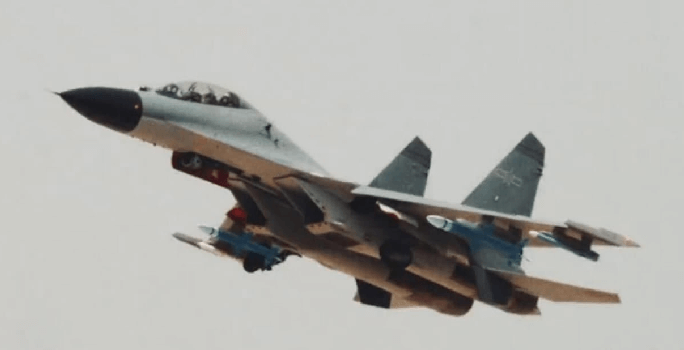As China faces military challenges from the US in the sea and India at the land border, new images of a missile on the People’s Liberation Army Air Force (PLAAF) J-11BS Flanker have surfaced on social media. While it is unclear which missile it is, experts have been deliberating it as a new anti-radiation missile.
If true, then this is another major news. Not only that it shows for the first time a PLAAF J-11BS with low-visibility marking, but even more surprising is the new and so far unknown missile it carries under its wings. ?
IMO this is most likely the long expected new ARM. ? pic.twitter.com/CZrfNfYbF7
— @Rupprecht_A (@RupprechtDeino) November 8, 2020
Anti Radiation Missiles (ARM) strike any enemy radar emission source. It designates targets that emit radio-frequency including surface-to-air missile systems.
A Twitter user @Rupprecht_A, whose Twitter bio reads that he is a China military aviation researcher, author, and China news reporter, was one of the first people to post these images.
Along with the pictures, he wrote that it is the new Chinese ARM. He revealed that the images are from the latest 2020 pilot recruiting video posted on a Facebook group. The images also show, for the first time, the PLAAF J-11BS, a twin-engine jet fighter taking off.
An interesting additional note:
That image is from the latest 2020 pilot recruiting video, showing briefly that J-11BS during take-off and it was first posted on a Facebook group:https://t.co/ED6k3cV6X5
However some say that J-11BS is a CG only? ?
Actually I don't think so. pic.twitter.com/3v312Lgrm7— @Rupprecht_A (@RupprechtDeino) November 8, 2020
Thomas Newdick of The Drive stated that it’s not possible to determine what unit the jet is assigned to and whether it is from an operational unit, or a test and evaluation outfit as the tail fins of the J-11BS were obscured.
While the quality of the images isn’t very good, he observed that the “cruciform fins on its mid-body section and at the rear, very similar to the U.S. military’s AGM-88 High-Speed Anti-Radiation Missile (HARM).”
Rejecting the possibility of the missile being the CM-102, a medium, supersonic AMR for manned and unmanned aircraft, Newdick said that CM-102’s fins are cropped rather than pointed, and the mid-body fins are long and fairly slender.
“Apart from this, the CM-102 was also developed by China for export — primary for the JF-17 Thunder multirole fighter — and is not known to be in PLAAF service.”
India has also successfully test-fired its first indigenous anti-radiation missile, the new-generation Rudram-1. Developed by the Defence Research and Development Organisation, the New Generation Anti-Radiation Missile (NGARM) has a launch speed of up to 2 Mach, twice the speed of sound, according to sources. The missile can be integrated with the Indian Air Force’s Su-30MKI Flanker.

Experts have also suspected the new missile as a derivative of the PL-15 air to air missile.
“As a beyond-visual-range weapon, the PL-15 would make a potentially suitable candidate for an ARM derivative, potentially swapping out its air-to-air radar with a passive homing seeker to engage air defense targets and, since the PL-15 is scaled for internal carriage in the stealthy J-20 fighter, an ARM version could equip this jet, too,” said Newdick.
The introduction of the new missile in the PLAAF is made at a time when China is surrounded by the US and India, both of whom are armed with surface to air missile systems.
India and Russia signed a $ 5.43 billion contract for the S-400 Triumf ‘SA-21 Growler’ for the Indian Air Force and the delivery is expected to start in 2021.
The US has also agreed to sell Patriot Advanced Capability-3 (PAC-3) missiles to Taiwan for an estimated cost of $620 million. Beijing has threatened to unify Taiwan, that it considers a renegade province, with force if necessary. On the other hand, Washington has promised Tapei to stand by its democratic rule of independence on the islands.




